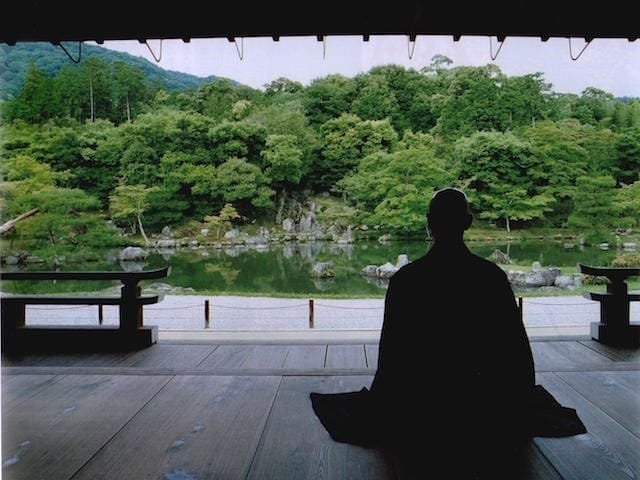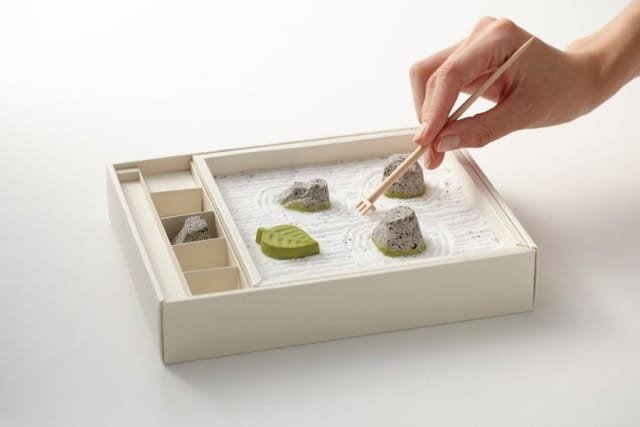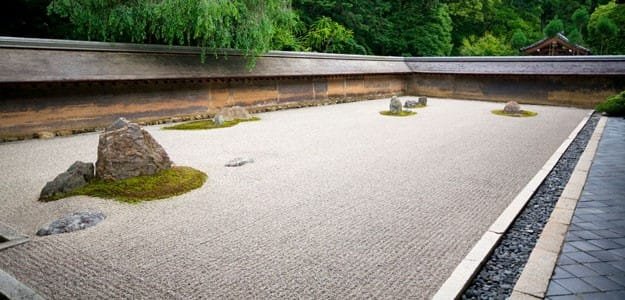There are certain gardens that are around Japan’s city structures that have been designed with a cultural standard that evokes natural materials and reflects the minimalist perspective.
Typically epitomized by Zen temples all over Japan, these minimalist nature-based gardens are called Zen gardens or Rock gardens.
In households, it is common to see decorative options and miniature gardens of made up of different house plants like flowers, weeds and even miniature level trees.
In nature, it is ordinary to see larger trees with different kinds of shrubs and flowers as organisms that make up the flora and fauna across a landscape.
A Japanese rock garden, evoking the spirit of Zen, employs the miniature design found in designer household plants or plant collections while providing a landscape that is bare and minimum in order to emphasize the subject matter.
One can describe—and aptly at that—rock gardens to be “dry landscapes”, suggesting a something outside of the common household but also a study of nature in a private or public social living space.
Though not limited to these, the common features of a Zen themed rock garden can usually be summed up into three features.
The first feature of a Zen themed rock garden is a clear ground plane made up of mostly gravel material and some additions of sand material.
The second feature of a Zen themed rock garden is an organized set of rocks that are often naturally smooth and usually arranged with a certain distance from each other.
The third feature of a Zen themed rock garden is enclosing or surrounding a fence or containing structure like a wall to indicate that the garden has boundaries.
Some rock gardens, especially those outside of a Zen temple will have added features like those of water running down as a stream and several kinds of plants, both of which are more representative of the natural world, which is a little deviation from the “dry landscape” that make up a Zen temple’s rock gardens—cleaning is part of gardening, you see.
Be it in the form of some other rock garden or a typical Zen temple rock garden, the Japanese rock garden is a standard that has kept many inside and outside of the culture fascinated by it, and by the same token, has evoked these gardens to be admired and respected as other cultural activities as far as Japan is concerned.
Taking all that has been said so far, why is a Japanese Zen rock garden designed in such a way?
Finally, why has the Japanese Zen rock garden design sustained itself as a favorite or at least a favorite reference for many a gardening aficionado?
The Role of Zen Buddhism in Japanese Rock Garden Design

Image Credit: Patternz
Aside from a very small amount of Christianity and the native religion of Shinto, Japan has also had Zen Buddhism.
Zen Buddhism was an adjunct religion and spiritual practice that came from scholars and monks in China.
The term “Zen” is a reference to both China’s Chan Buddhism and their spiritual perspective or practices.
Over a certain duration, the Chan Buddhism perspective of China had been taken from a set of adjunct practices and developed to be a holistic Japanese template that has influenced daily life, even outside the Zen temple.
Going back to a majority of that influence, Zen Buddhist monks or priests have been practicing meditation for a very long time.
Outside of meditation in sitting, rock gardens are a reflection of both their training inside and how a monk or priest prepares to see the outside world.
This gives us hints that Japanese rock gardens, beautiful as they are, reflect more a meditative type of orientation and one that is not emphasized only in the rocks but on the gravels, as well.
A Zen Buddhist priest or monk is usually tasked to clean up and maintain the state of the garden—from here, we learn some valuable lessons on why Japanese rock gardens are designed as such.
Specifically, going back to the three main features, there is value to be gained from understanding the rock garden’s design in terms of the type of rock, the gravel-sand formation, and the material enclosure.
First, the type of rocks maintained are far from the variety of rocks that can be seen in nature, and the preference for “smooth or smoother” type of rocks can be observed.
Second, the gravel-sand formation maintained is raked and dispersed differently depending on perhaps the mood or the seasons—some shaped like waves of water, some shaped like ripples of water.
Finally, the material enclosure maintained is usually a fence or wall that acts as a delineation outside of natural environments and one that is akin more to the context of a museum viewing rather than a hiking scenery.
In these cases, the role of Zen Buddhist practitioners and Zen Buddhism is prominent in the designing a rock garden, which is more deliberate in purpose than a natural one.
The purpose is deliberate, and one with a sensible method—as a complementary training tool in the goal of Zen meditation.
Given that monks or priests usually spend so much time in the sitting position, it can be understood that an extension of practice, like cleaning a rock garden can be a worthy recovery or rest—by design—amidst other activities that are done without taking away from the meditative training goals.
Final Thoughts

Image Credit – Laughing Squid
Why a Japanese Zen themed rock garden design has seeped throughout everyday Japanese pop culture (and worldwide gardening culture) seem all but a riddle or a contradiction.
After all, should not gardening be anything but dry?
And, to be blunt, it is not like locals or international admirers practice strict meditation to warrant that degree of garden design.
The most probable answer to this question is that a Japanese Zen themed rock garden is not “dry” but calls upon a much more miniature and minimal use of nature to abstract out fantastical beauty for an overall toned downed look
And we can see it: “smooth rocks” as mountains, “ripple or wave gravel formations” as rivers and oceans (respectively) and “material enclosure” as a painting canvas.
And therein lies a beauty more appreciated when one is able to do more meditation, which many can benefit from in this ever busy world (not just fans of gardening).


